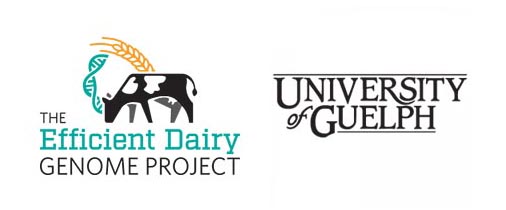Dairy Farm Facts for 2015
No. of dairy farms in Canada: 11,683
Average herd size: 82
Total milk production in 2015 per hL: 93.8 million
Growth in production: 5%
What is Feed Efficiency?
Since animal feed is the biggest cost for most producers what with the rising costs of feed, increasing feed efficiency in production is very critical. There are aspects of feed management that can increase feed efficiency but now with our increasing knowledge of the use of genomics, we can select animals that are more feed efficient using genetic tools. As Dr. Milgior says, “Feed efficiency can make a big difference in profitability and sustainability.”
Simply put:
Feed Efficiency = lbs of milk
lbs of dry matter intake
In the dairy industry, feed efficiency specifically looks at how much feed a cow eats vs how much milk she produces. Good feed efficiency means that more nutrients are directed into milk production with less manure and nutrients excreted. The natural variation between animals can be quite high, as much as 35%. Therefore, in practical terms, researchers and producers can use selective breeding to choose animals to get the same milk production but with less feed input. By including genetic information in our selection decisions, we can increase our accuracy of selection and increase the rate at which we can improve feed efficiency. There are also significant environmental gains.
For a more detailed description of feed efficiency, see this article entitled “Should you Breed for Feed Efficiency?” in The Bullvine.
